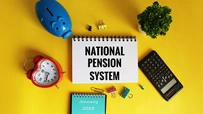ITR Refund Processed but Not Credited? Here’s What May Be Causing the Delay
Disclaimer: This blog contains generic information. Ujjivan is not responsible for the accuracy of the information mentioned herein. Please consult an expert tax consultant to make an informed decision.
October 14, 2025

Many taxpayers in India are eagerly awaiting their income tax refunds for the 2025 assessment year, only to encounter unexpected delays. If you filed your Income Tax Return (ITR) on time and are seeing a “Processed” status but no money in your bank, you’re not alone. As of late September 2025, over 1.6 crore returns were still pending processing (out of 7.6 crore filed), meaning refunds in those cases had yet to be issued. This article explores the common reasons behind ITR refund delays in 2025, how to check your income tax refund status online, and what steps you can take to resolve the issue.
Common Reasons for Income Tax Refund Delays in 2025
ITR refunds can be delayed for many reasons, ranging from simple mistakes to procedural checks. Here are some of the most common causes for an income tax refund delay in India for 2025:
How to Check Your Income Tax Refund Status in India
Wondering what’s happening with your refund? Thankfully, it’s easy to check your income tax refund status online through the Income Tax Department’s systems. There are two primary ways to track the status of your ITR refund:
On the Income Tax E-filing Portal (Post-Login)
Log in to the Income Tax e-filing portal with your PAN/Aadhaar (as user ID) and password. After logging in, navigate to “e-File” > “Income Tax Returns” > “View Filed Returns.” Locate the relevant Assessment Year (e.g., AY 2025-26 for the return filed in 2025) and click on “View Details”. This will display the refund status and life cycle of your return, including whether the refund was issued, the date of issue, amount, and any clearance or failure messages.Via the TIN NSDL Refund Status Page (Pre-Login)
If you prefer not to log in or don’t have an account, you can use the Tax Information Network’s refund tracking. Visit the NSDL refund status page at tin.tin.nsdl.com/oltas/refundstatuslogin.html (this is an official government site). Enter your PAN, select the Assessment Year, and fill the captcha to submit. This will show a message about your refund.
Note: The NSDL site updates the status only about 10 days after the refund has been sent by CPC to the bank. So, if your return is still in process or just processed yesterday, the NSDL tool might not have data yet. If the refund was issued, the NSDL status will tell you the date of credit and the last four digits of the bank account credited.
When you check your status, here are some common status messages and what they mean:
What to Do if Your ITR Refund Is Delayed
If your refund is delayed beyond the typical 4–5-week timeline or the portal shows “processed” for a while with no payment, don’t panic. Here are steps you can take to troubleshoot and expedite your income tax refund:
Under Section 244A of the Income Tax Act, the tax department must pay you interest at 0.5% per month (6% per annum) on the refund amount if they delay beyond the prescribed period. This interest is usually automatically calculated and added to your refund when it is issued.
Tips to Avoid Refund Delays in the Future
While not every delay is in your control, several steps can help ensure faster refunds next time:
Final Thoughts
Most refund delays are caused by technical or procedural issues, not by the department withholding your money. In many cases, simply re-validating your bank account or submitting a reissue request fixes the problem.
Remember that the Income Tax Department handles millions of refunds daily, so small delays can occur. Stay patient but proactive. Keep checking the portal, verify your details, and follow up if needed. Your refund will reach you once the issue is resolved.
Disclaimer:
The contents herein are only for informational purposes and generic in nature. The content does not amount to an offer, invitation or solicitation of any kind to buy or sell, and are not intended to create any legal rights or obligations. This information is subject to updation, completion, amendment and verification without notice. The contents herein are also subject to other product-specific terms and conditions, as well as any applicable third-party terms and conditions, for which Ujjivan Small Finance Bank assumes no responsibility or liability.
Nothing contained herein is intended to constitute financial, investment, legal, tax, or any other professional advice or opinion. Please obtain professional advice before making investment or any other decisions. Any investment decisions that may be made by the you shall be at your own sole discretion, independent analysis and evaluation of the risks involved. The use of any information set out in this document is entirely at the user’s own risk. Ujjivan Small Finance Bank Limited makes no representation or warranty, express or implied, as to the accuracy and completeness for any information herein. The Bank disclaims any and all liability for any loss or damage (direct, indirect, consequential, or otherwise) incurred by you due to use of or due to investment, product application decisions made by you on the basis of the contents herein. While the information is prepared in good faith from sources deemed reliable (including public sources), the Bank disclaims any liability with respect to accuracy of information or any error or omission or any loss or damage incurred by anyone in reliance on the contents herein, in any manner whatsoever.
To know more about Ujjivan Small Finance Bank Products Visit:"https://www.ujjivansfb.in"
All intellectual property rights, including copyrights, trademarks, and other proprietary rights, pertaining to the content and materials displayed herein, belong
to Ujjivan Small Finance Bank Limited or its licensors. Unauthorised use or misuse of any intellectual property, or other content displayed herein is strictly prohibited and the same is not intended for distribution to, or use by, any person in any jurisdiction where such distribution or use would (by reason of that person’s nationality, residence or otherwise) be contrary to law or registration or would subject Ujjivan Small Finance Bank Limited or its affiliates to any licensing or registration requirements.
FAQs
1. How long does it take to get an ITR refund after processing?
ITR refund usually 4–5 weeks post e-verification, but it can take longer for any complex cases, during the busy season or due to other reasons.
2. What does “Refund Processed” mean?
It means your return was reviewed and approved, but the refund may still be in transit to your account.
3. Can I change my bank account for refund credit?
Yes, by adding and pre-validating a new account, then raising a refund reissue request.





